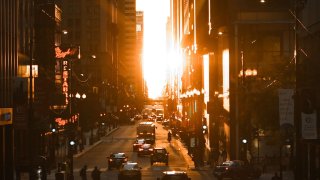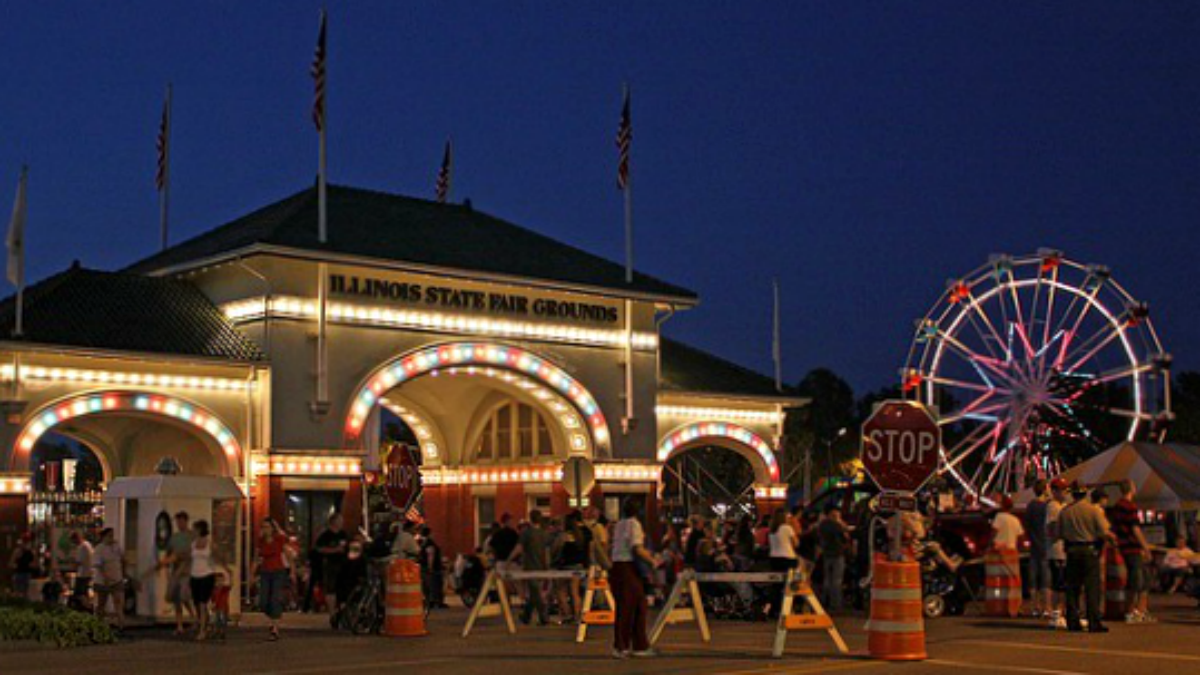
As cooler temperatures are in the air and Chicagoans begin to look ahead to fall, the signs of the upcoming season will be in the skies as well.
According to Adler Planetarium, the autumnal equinox when sunsets align with the Chicago street grid is just one of several sights Chicago-area residents can see in the skies this coming month.
From Chicagohenge to a chance to see Venus and Mercury, here's a look at how you can get wondrous views this month from your home:
Chicagohenge and the autumnal equinox
While the meteorological autumn begins at the start of September, astronomical autumn doesn't begin until the autumnal equinox occurs, which is early in the morning on Sept. 23 in 2023.
On the date of the autumnal equinox, daytime and nighttime hours are roughly equivalent, as is the case during the vernal equinox that marks the start of spring.
Near the date of the equinoxes in Chicago, residents can be treated to a special view of the sunset by taking a look down any east-west street near the dates of Sept. 20-23.
Local
After Sept. 23, there will gradually be more nighttime than daytime hours leading up until the winter solstice on Dec. 21, the shortest day of the year.
A chance to see Saturn at dusk
Feeling out of the loop? We'll catch you up on the Chicago news you need to know. Sign up for the weekly Chicago Catch-Up newsletter here.
During this September, Saturn rises in the east-southeast during dusk, according to Adler. While setting the west-southwest in between 5:30 a.m. (start of month) and 3:30 a.m. (end of month), the planet will be especially visible when it appears close to the moon just before the month's end.
On the evening of Sept. 26, Saturn will appear just a few degrees away from a waxing gibbous moon, according to Adler.
Venus and Mercury sightings
Saturn isn't the only planet Chicago-area residents will have a chance at seeing this month, as both Venus and Mercury will be visible at brief points in the coming weeks.
In just a few days during the early morning hours of Sept. 11, Venus will be visible in the eastern sky near a slim, waning crescent moon.
As for Mercury, Chicagoans will have their best shot at catching the planet closest to the sun around 45 minutes before sunrise beginning on Sept. 20 by looking to the eastern horizon.
However, Adler advises to not look for Mercury once the sun begins to rise, as looking at the solar disk could cause permanent eye damage.
Full super harvest moon
The final supermoon of the year occurs near the end of the month on Sept. 29. With the full moon being the closest occurrence to the fall equinox, typically called the harvest moon, it is given the nickname of "full super harvest moon."
Before the Sept. 29 full moon, a new moon will be visible on Sept. 14 and a first quarter moon can be seen on Sept. 22.



